Fallen Angels: Birds of Paradise in Early Modern Europe
April 4, 2018
Art & Religion
 When birds of paradise first arrived to Europe, as dried specimens with legs and wings removed, they were seen in almost mythical terms — as angelic beings forever airborne, nourished by dew and the “nectar” of sunlight. Natalie Lawrence looks at how European naturalists of the 16th and 17th centuries attempted to make sense of these entirely novel and exotic creatures from the East.
Pens and Needles: Reviving Book-Embroidery in Victorian England
March 21, 2018
Books & Art
When birds of paradise first arrived to Europe, as dried specimens with legs and wings removed, they were seen in almost mythical terms — as angelic beings forever airborne, nourished by dew and the “nectar” of sunlight. Natalie Lawrence looks at how European naturalists of the 16th and 17th centuries attempted to make sense of these entirely novel and exotic creatures from the East.
Pens and Needles: Reviving Book-Embroidery in Victorian England
March 21, 2018
Books & Art
 Fashionable in the 16th and 17th century, the art of embroidering unique covers for books saw a comeback in late 19th-century England, from the middle-class drawing room to the Arts and Crafts movement. Jessica Roberson explores the bibliomania, patriotism, and issues around gender so central to the revival.
Illustrating Carnival: Remembering the Overlooked Artists Behind Early Mardi Gras
February 7, 2018
Art & History
Fashionable in the 16th and 17th century, the art of embroidering unique covers for books saw a comeback in late 19th-century England, from the middle-class drawing room to the Arts and Crafts movement. Jessica Roberson explores the bibliomania, patriotism, and issues around gender so central to the revival.
Illustrating Carnival: Remembering the Overlooked Artists Behind Early Mardi Gras
February 7, 2018
Art & History
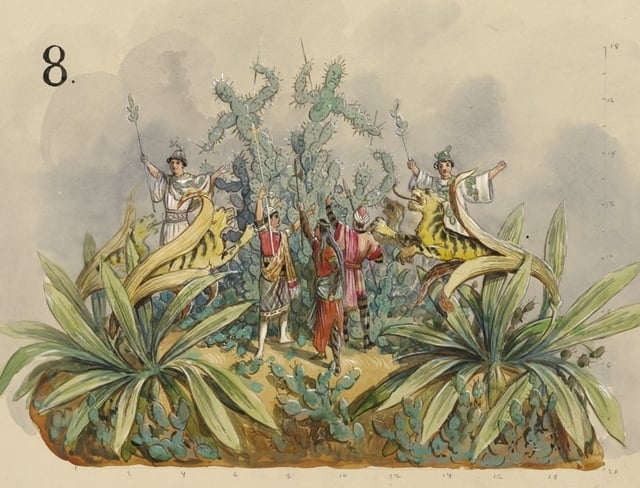 For more than 150 years the city of New Orleans has been known for the theatricality and extravagance of its Mardi Gras celebrations. Allison C. Meier looks at the wonderfully ornate float and costume designs from Carnival’s “Golden Age” and the group of New Orleans artists who created them.
The Dreams of an Inventor in 1420
January 24, 2018
Science & Art
For more than 150 years the city of New Orleans has been known for the theatricality and extravagance of its Mardi Gras celebrations. Allison C. Meier looks at the wonderfully ornate float and costume designs from Carnival’s “Golden Age” and the group of New Orleans artists who created them.
The Dreams of an Inventor in 1420
January 24, 2018
Science & Art
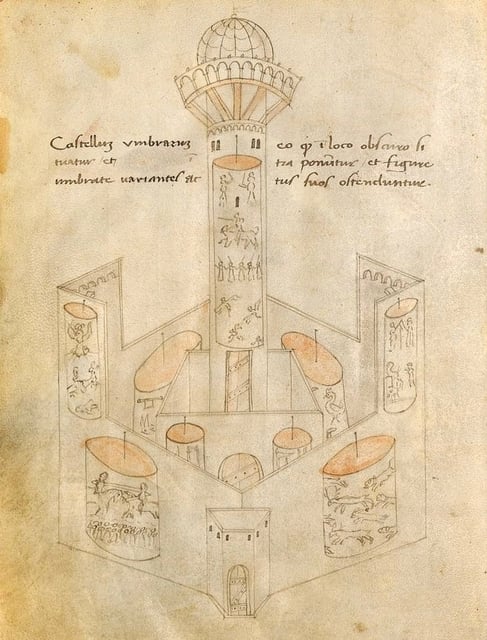 Bennett Gilbert peruses the sketchbook of 15th-century engineer Johannes de Fontana, a catalogue of designs for a variety of fantastic and often impossible inventions, including fire-breathing automatons, pulley-powered angels, and the earliest surviving drawing of a magic lantern device.
Pods, Pots, and Potions: Putting Cacao to Paper in Early Modern Europe
December 7, 2017
Science & Art & History
Bennett Gilbert peruses the sketchbook of 15th-century engineer Johannes de Fontana, a catalogue of designs for a variety of fantastic and often impossible inventions, including fire-breathing automatons, pulley-powered angels, and the earliest surviving drawing of a magic lantern device.
Pods, Pots, and Potions: Putting Cacao to Paper in Early Modern Europe
December 7, 2017
Science & Art & History
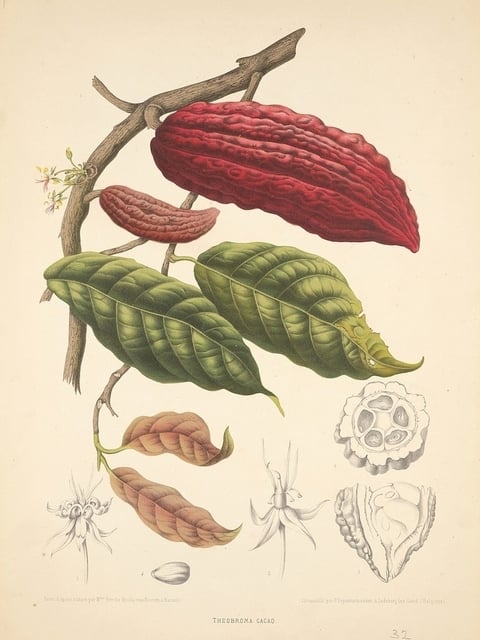 Christine Jones explores the different ways the cacao tree has been depicted through history — from 16th-century codices to 18th-century botanicals — and what this changing iconography reveals about cacao’s journey into European culture.
Brief Encounters with Jean-Frédéric Maximilien de Waldeck
November 22, 2017
Art & History
Christine Jones explores the different ways the cacao tree has been depicted through history — from 16th-century codices to 18th-century botanicals — and what this changing iconography reveals about cacao’s journey into European culture.
Brief Encounters with Jean-Frédéric Maximilien de Waldeck
November 22, 2017
Art & History
 Not a lot concerning the artist, erotic publisher, explorer, and general enigma Count de Waldeck can be taken at face value, and this certainly includes his fanciful representations of ancient Mesoamerican culture which — despite the exquisite brilliance of their execution — run wild with anatopistic lions, elephants, and suspicious architecture. Rhys Griffiths looks at the life and work of one of the 19th century’s most mysterious and eccentric figures.
Flash Mob: Revolution, Lightning, and the People’s Will
November 9, 2017
Art & History
Not a lot concerning the artist, erotic publisher, explorer, and general enigma Count de Waldeck can be taken at face value, and this certainly includes his fanciful representations of ancient Mesoamerican culture which — despite the exquisite brilliance of their execution — run wild with anatopistic lions, elephants, and suspicious architecture. Rhys Griffiths looks at the life and work of one of the 19th century’s most mysterious and eccentric figures.
Flash Mob: Revolution, Lightning, and the People’s Will
November 9, 2017
Art & History
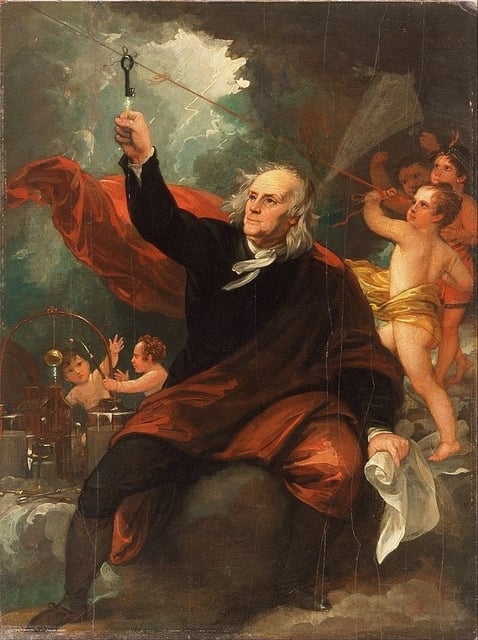 Kevin Duong explores how leading French revolutionaries, in need of an image to represent the all important “will of the people”, turned to the thunderbolt — a natural symbol of power and illumination that also signalled the scientific ideals so key to their project.
Defining the Demonic
October 25, 2017
Books & Art & Religion
Kevin Duong explores how leading French revolutionaries, in need of an image to represent the all important “will of the people”, turned to the thunderbolt — a natural symbol of power and illumination that also signalled the scientific ideals so key to their project.
Defining the Demonic
October 25, 2017
Books & Art & Religion
 Although Jacques Collin de Plancy’s Dictionnaire infernal, a monumental compendium of all things diabolical, was first published in 1818 to much success, it is the fabulously illustrated final edition of 1863 which secured the book as a landmark in the study and representation of demons. Ed Simon explores the work and how at its heart lies an unlikely but pertinent synthesis of the Enlightenment and the occult.
Human Forms in Nature: Ernst Haeckel’s Trip to South Asia and Its Aftermath
September 13, 2017
Science & Art
Although Jacques Collin de Plancy’s Dictionnaire infernal, a monumental compendium of all things diabolical, was first published in 1818 to much success, it is the fabulously illustrated final edition of 1863 which secured the book as a landmark in the study and representation of demons. Ed Simon explores the work and how at its heart lies an unlikely but pertinent synthesis of the Enlightenment and the occult.
Human Forms in Nature: Ernst Haeckel’s Trip to South Asia and Its Aftermath
September 13, 2017
Science & Art
 An early promoter and populariser of Darwin’s evolutionary theory, the German biologist and artist Ernst Haeckel was a hugely influential figure of the late 19th century. Bernd Brunner looks at how a trip to Sri Lanka sowed the seeds for not only Haeckel’s majestic illustrations from his Art Forms in Nature, for which he is perhaps best known today, but also his disturbing ideas on race and eugenics.
Out From Behind This Mask
July 27, 2017
Philosophy & Art & History
An early promoter and populariser of Darwin’s evolutionary theory, the German biologist and artist Ernst Haeckel was a hugely influential figure of the late 19th century. Bernd Brunner looks at how a trip to Sri Lanka sowed the seeds for not only Haeckel’s majestic illustrations from his Art Forms in Nature, for which he is perhaps best known today, but also his disturbing ideas on race and eugenics.
Out From Behind This Mask
July 27, 2017
Philosophy & Art & History
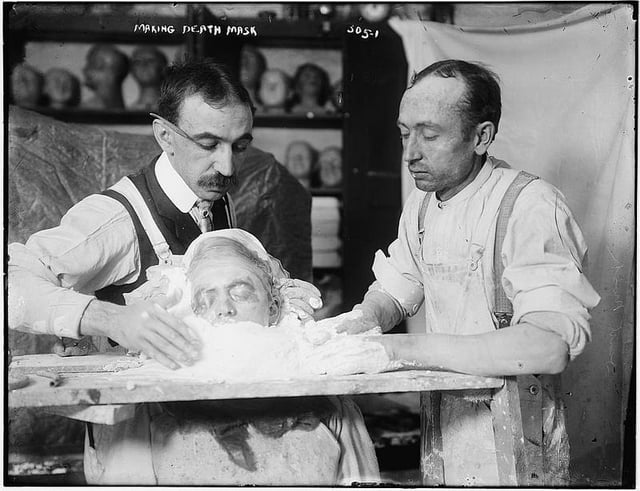 A Barthesian bristle and the curious power of Walt Whitman’s posthumous eyelids — D. Graham Burnett on meditations conjured by a visit to the death masks of the Laurence Hutton Collection.
Gustav Wunderwald’s Paintings of Weimar Berlin
May 31, 2017
Painting & Art
A Barthesian bristle and the curious power of Walt Whitman’s posthumous eyelids — D. Graham Burnett on meditations conjured by a visit to the death masks of the Laurence Hutton Collection.
Gustav Wunderwald’s Paintings of Weimar Berlin
May 31, 2017
Painting & Art
 The Berlin of the 1920s is often associated with a certain excess and decadence, but it was a quite different side of the city — the “sobriety and desolation” of its industrial and working-class districts — which came to obsess the painter Gustav Wunderwald. Mark Hobbs explores.
Woodcuts and Witches
May 4, 2017
Books & Art & History & Religion
The Berlin of the 1920s is often associated with a certain excess and decadence, but it was a quite different side of the city — the “sobriety and desolation” of its industrial and working-class districts — which came to obsess the painter Gustav Wunderwald. Mark Hobbs explores.
Woodcuts and Witches
May 4, 2017
Books & Art & History & Religion
 Jon Crabb on the witch-craze of Early Modern Europe, and how the concurrent rise of the mass-produced woodcut helped forge the archetype of the broom-riding crone — complete with cauldron and cats — so familiar today.
A Queer Taste for Macaroni
February 22, 2017
Art & History
Jon Crabb on the witch-craze of Early Modern Europe, and how the concurrent rise of the mass-produced woodcut helped forge the archetype of the broom-riding crone — complete with cauldron and cats — so familiar today.
A Queer Taste for Macaroni
February 22, 2017
Art & History
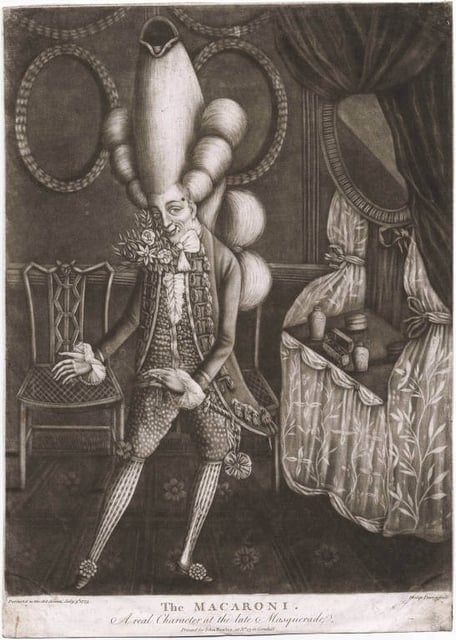 With his enormous hair, painted face, and dainty attire, the so-called “macaroni” was a common sight upon the streets and ridiculing prints of 1770s London. Dominic Janes explores how with this new figure — and the scandalous sodomy trials with which the stereotype became entwined — a widespread discussion of same-sex desire first entered the public realm, long before the days of Oscar Wilde.
The Many Lives of the Medieval Wound Man
December 7, 2016
Science & Art
With his enormous hair, painted face, and dainty attire, the so-called “macaroni” was a common sight upon the streets and ridiculing prints of 1770s London. Dominic Janes explores how with this new figure — and the scandalous sodomy trials with which the stereotype became entwined — a widespread discussion of same-sex desire first entered the public realm, long before the days of Oscar Wilde.
The Many Lives of the Medieval Wound Man
December 7, 2016
Science & Art
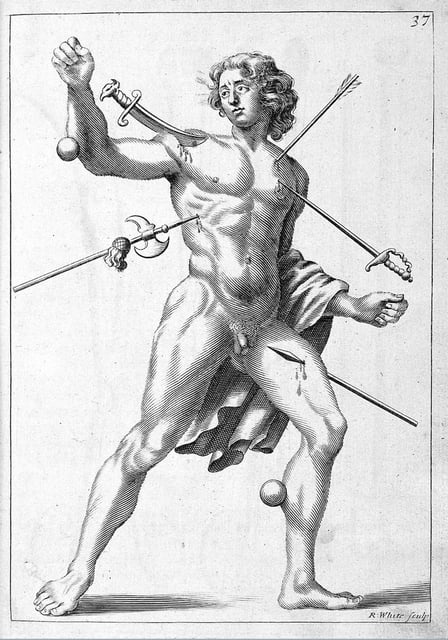 Sliced, stabbed, punctured, bleeding, harassed on all sides by various weaponry, the curious image of Wound Man is a rare yet intriguing presence in the world of medieval and early modern medical manuscripts. Jack Hartnell explores this enigmatic figure’s journey through the centuries.
Harry Clarke’s Looking Glass
October 12, 2016
Art
With their intricate line and often ghoulish tone, the works of Irish artist Harry Clarke are amongst the most striking in the history of illustration and stained glass design. Kelly Sullivan explores how, unknown to many at the time, Clarke took to including his own face in many of his pictures.
Out of Their Love They Made It: A Visual History of Buraq
September 21, 2016
Art & Religion
Sliced, stabbed, punctured, bleeding, harassed on all sides by various weaponry, the curious image of Wound Man is a rare yet intriguing presence in the world of medieval and early modern medical manuscripts. Jack Hartnell explores this enigmatic figure’s journey through the centuries.
Harry Clarke’s Looking Glass
October 12, 2016
Art
With their intricate line and often ghoulish tone, the works of Irish artist Harry Clarke are amongst the most striking in the history of illustration and stained glass design. Kelly Sullivan explores how, unknown to many at the time, Clarke took to including his own face in many of his pictures.
Out of Their Love They Made It: A Visual History of Buraq
September 21, 2016
Art & Religion
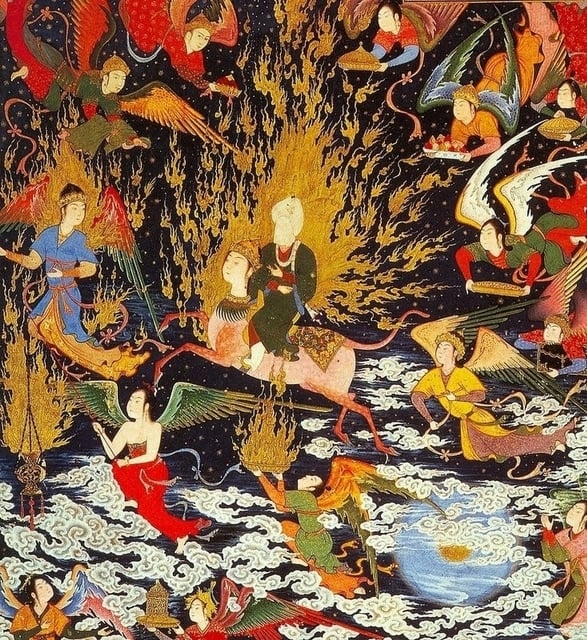 Although mentioned only briefly in the Qur’an, the story of the Prophet Muhammad’s night journey to heaven astride a winged horse called Buraq has long caught the imagination of artists. Yasmine Seale charts the many representations of this enigmatic steed, from early Islamic scripture to contemporary Delhi, and explores what such a figure can tell us about the nature of belief.
“Unlimiting the Bounds”: the Panorama and the Balloon View
August 3, 2016
Art & History
Although mentioned only briefly in the Qur’an, the story of the Prophet Muhammad’s night journey to heaven astride a winged horse called Buraq has long caught the imagination of artists. Yasmine Seale charts the many representations of this enigmatic steed, from early Islamic scripture to contemporary Delhi, and explores what such a figure can tell us about the nature of belief.
“Unlimiting the Bounds”: the Panorama and the Balloon View
August 3, 2016
Art & History
 The second essay in a two-part series in which Lily Ford explores how balloon flight transformed our ideas of landscape. Here she looks at the phenomenon of the panorama, and how its attempts at creating the immersive view were inextricably linked to the new visual experience opened up by the advent of ballooning.
“For the Sake of the Prospect”: Experiencing the World from Above in the Late 18th Century
July 20, 2016
Art & History
The second essay in a two-part series in which Lily Ford explores how balloon flight transformed our ideas of landscape. Here she looks at the phenomenon of the panorama, and how its attempts at creating the immersive view were inextricably linked to the new visual experience opened up by the advent of ballooning.
“For the Sake of the Prospect”: Experiencing the World from Above in the Late 18th Century
July 20, 2016
Art & History
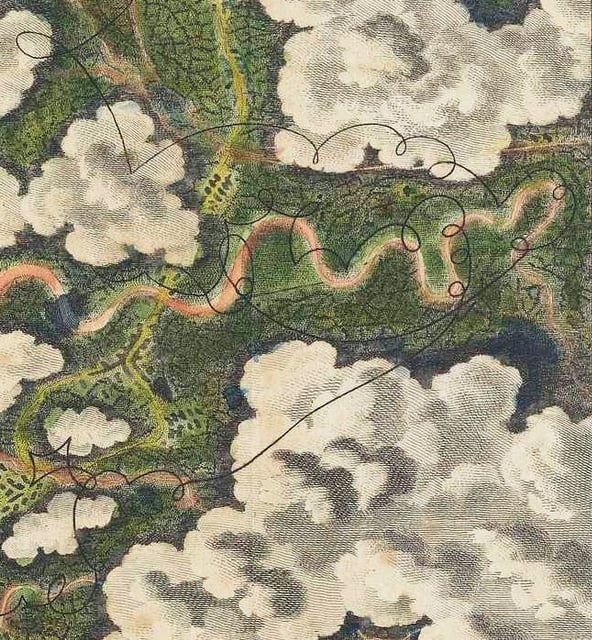 The first essay in a two-part series in which Lily Ford explores how balloon flight transformed our ideas of landscape. We begin with a look at the unique set of images included in Thomas Baldwin’s Airopaidia (1786) — the first “real” overhead aerial views.
The Secret History of Holywell Street: Home to Victorian London’s Dirty Book Trade
June 29, 2016
Photography & Literature & Art & History
The first essay in a two-part series in which Lily Ford explores how balloon flight transformed our ideas of landscape. We begin with a look at the unique set of images included in Thomas Baldwin’s Airopaidia (1786) — the first “real” overhead aerial views.
The Secret History of Holywell Street: Home to Victorian London’s Dirty Book Trade
June 29, 2016
Photography & Literature & Art & History
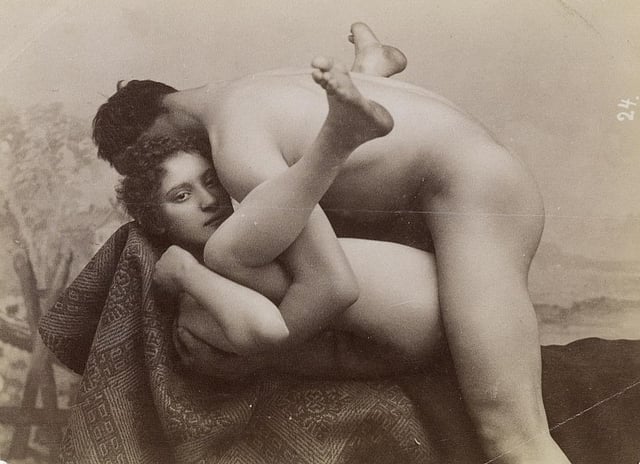 Victorian sexuality is often considered synonymous with prudishness, conjuring images of covered-up piano legs and dark ankle-length skirts. Historian Matthew Green uncovers a quite different scene in the sordid story of Holywell St, 19th-century London’s epicentre of erotica and smut.
Picturing Don Quixote
April 6, 2016
Books & Literature & Art
Victorian sexuality is often considered synonymous with prudishness, conjuring images of covered-up piano legs and dark ankle-length skirts. Historian Matthew Green uncovers a quite different scene in the sordid story of Holywell St, 19th-century London’s epicentre of erotica and smut.
Picturing Don Quixote
April 6, 2016
Books & Literature & Art
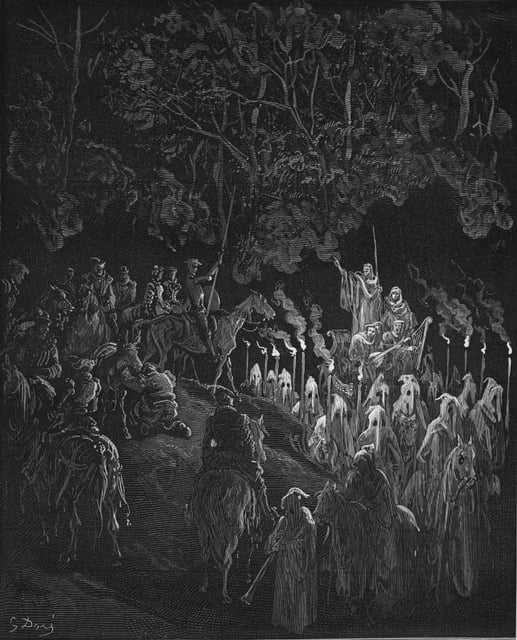 This year marks the 400th anniversary of the death of Miguel de Cervantes, author of one of the best-loved and most frequently illustrated books in the history of literature — Don Quixote. Rachel Schmidt explores how the varying approaches to illustrating the tale have reflected and impacted its reading through the centuries.
The Strange Case of Mr William T. Horton
March 9, 2016
Art
This year marks the 400th anniversary of the death of Miguel de Cervantes, author of one of the best-loved and most frequently illustrated books in the history of literature — Don Quixote. Rachel Schmidt explores how the varying approaches to illustrating the tale have reflected and impacted its reading through the centuries.
The Strange Case of Mr William T. Horton
March 9, 2016
Art
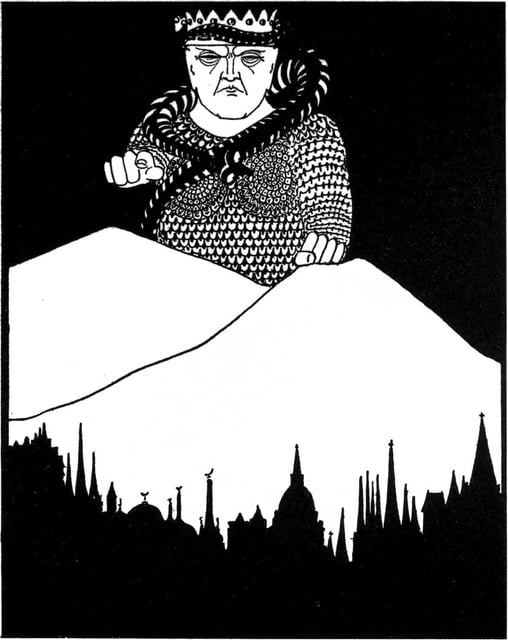 Championed in his day by friend and fellow mystic W. B. Yeats, today the artist William T. Horton and his stark minimalistic creations are largely forgotten. Jon Crabb on a unique and unusual talent.
Who Says Michelangelo Was Right? Conflicting Visions of the Past in Early Modern Prints
February 10, 2016
Art
Championed in his day by friend and fellow mystic W. B. Yeats, today the artist William T. Horton and his stark minimalistic creations are largely forgotten. Jon Crabb on a unique and unusual talent.
Who Says Michelangelo Was Right? Conflicting Visions of the Past in Early Modern Prints
February 10, 2016
Art
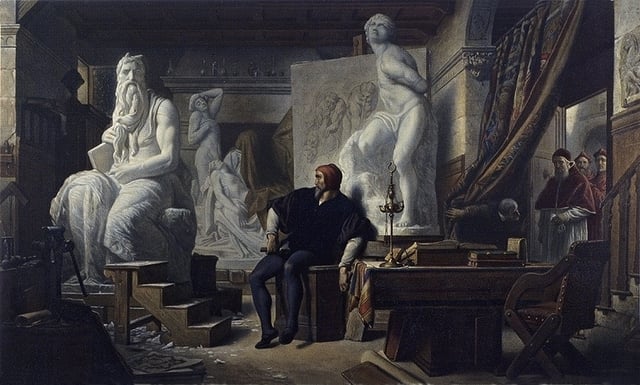 When the lost classical sculpture Laocoön and His Sons — lauded as representing the very highest ideal of art — was dug up in 1506 with limbs missing, the authorities in Rome set about restoring it to how they imagined it once to look. Monique Webber explores how it was in reproductive prints that this vision was contested, offering a challenge to the mainstream interpretation of Antiquity.
On Oscar Wilde and Plagiarism
January 13, 2016
Books & Poems & Art
When the lost classical sculpture Laocoön and His Sons — lauded as representing the very highest ideal of art — was dug up in 1506 with limbs missing, the authorities in Rome set about restoring it to how they imagined it once to look. Monique Webber explores how it was in reproductive prints that this vision was contested, offering a challenge to the mainstream interpretation of Antiquity.
On Oscar Wilde and Plagiarism
January 13, 2016
Books & Poems & Art
 Celebrated for his innovative wit, Oscar Wilde and the notion of originality are common bedfellows. The pairing, however, is not without its complications. Joseph Bristow and Rebecca N. Mitchell explore the claims of plagiarism that dogged Wilde’s career, particularly as regards his relationship with that other great figure of late-19th-century Decadence, the American painter James McNeill Whistler.
Tribal Life in Old Lyme: Canada’s Colorblind Chronicler and his Connecticut Exile
September 2, 2015
Books & Painting & Art
Abigail Walthausen explores the life and work of Arthur Heming, the Canadian painter who — having been diagnosed with colourblindness as a child — worked for most of his life in a distinctive palette of black, yellow, and white.
Sex and Science in Robert Thornton’s Temple of Flora
March 11, 2015
Books & Poems & Painting & Science & Art
Celebrated for his innovative wit, Oscar Wilde and the notion of originality are common bedfellows. The pairing, however, is not without its complications. Joseph Bristow and Rebecca N. Mitchell explore the claims of plagiarism that dogged Wilde’s career, particularly as regards his relationship with that other great figure of late-19th-century Decadence, the American painter James McNeill Whistler.
Tribal Life in Old Lyme: Canada’s Colorblind Chronicler and his Connecticut Exile
September 2, 2015
Books & Painting & Art
Abigail Walthausen explores the life and work of Arthur Heming, the Canadian painter who — having been diagnosed with colourblindness as a child — worked for most of his life in a distinctive palette of black, yellow, and white.
Sex and Science in Robert Thornton’s Temple of Flora
March 11, 2015
Books & Poems & Painting & Science & Art
 Bridal beds, blushing captives, and swollen trunks – Carl Linnaeus’ taxonomy of plants heralded a whole new era in 18th-century Europe of plants being spoken of in sexualised terms. Martin Kemp explores* how this association between the floral and erotic reached its visual zenith in Robert Thornton’s exquisitely illustrated Temple of Flora.
The Eternal Guffaw: John Leech and The Comic History of Rome
February 25, 2015
Books & Art
At the beginning of the 1850s, two stalwarts from the heart of London-based satirical magazine Punch, Gilbert Abbott à Beckett and John Leech, cast their mocking eye a little further back in time and published The Comic History of Rome. Caroline Wazer explores how it is not in the text but rather in Leech’s delightfully anachronistic illustrations that the book’s true subversion lies, offering as they do a critique of Victorian society itself.
Illustrations of Madness: James Tilly Matthews and the Air Loom
November 12, 2014
Science & Art & History
Mike Jay recounts the tragic story of James Tilly Matthews, a former peace activist of the Napoleonic Wars who was confined to London’s notorious Bedlam asylum in 1797 for believing that his mind was under the control of the “Air Loom” – a terrifying machine whose mesmeric rays and mysterious gases were brainwashing politicians and plunging Europe into revolution, terror, and war.
Redressing the Balance: Levinus Vincent’s Wonder Theatre of Nature
August 20, 2014
Science & Art
Bert van de Roemer explores the curiosity cabinet of the Dutch collector Levinus Vincent and how the aesthetic drive behind his meticulous ordering of the contents was in essence religious, an attempt to emphasise the wonder of God’s creations by restoring the natural world to its prelapsarian harmony.
The Tale of Beatrix Potter
July 23, 2014
Books & Art
Bridal beds, blushing captives, and swollen trunks – Carl Linnaeus’ taxonomy of plants heralded a whole new era in 18th-century Europe of plants being spoken of in sexualised terms. Martin Kemp explores* how this association between the floral and erotic reached its visual zenith in Robert Thornton’s exquisitely illustrated Temple of Flora.
The Eternal Guffaw: John Leech and The Comic History of Rome
February 25, 2015
Books & Art
At the beginning of the 1850s, two stalwarts from the heart of London-based satirical magazine Punch, Gilbert Abbott à Beckett and John Leech, cast their mocking eye a little further back in time and published The Comic History of Rome. Caroline Wazer explores how it is not in the text but rather in Leech’s delightfully anachronistic illustrations that the book’s true subversion lies, offering as they do a critique of Victorian society itself.
Illustrations of Madness: James Tilly Matthews and the Air Loom
November 12, 2014
Science & Art & History
Mike Jay recounts the tragic story of James Tilly Matthews, a former peace activist of the Napoleonic Wars who was confined to London’s notorious Bedlam asylum in 1797 for believing that his mind was under the control of the “Air Loom” – a terrifying machine whose mesmeric rays and mysterious gases were brainwashing politicians and plunging Europe into revolution, terror, and war.
Redressing the Balance: Levinus Vincent’s Wonder Theatre of Nature
August 20, 2014
Science & Art
Bert van de Roemer explores the curiosity cabinet of the Dutch collector Levinus Vincent and how the aesthetic drive behind his meticulous ordering of the contents was in essence religious, an attempt to emphasise the wonder of God’s creations by restoring the natural world to its prelapsarian harmony.
The Tale of Beatrix Potter
July 23, 2014
Books & Art
 This year, the works of one of the most successful and universal writers of all time came into the public domain in many countries around the world. The Tale of Peter Rabbit, The Tale of Squirrel Nutkin, The Tale of Benjamin Bunny, The Tale of Jemima Puddle-Duck – in all, thirty-three books bearing the name “Beatrix Potter” have sold close to 200 million copies. Frank Delaney enquires into the more complex woman behind the safe and warm-hearted stories.
Picturing Pyrotechnics
June 25, 2014
Art & History
This year, the works of one of the most successful and universal writers of all time came into the public domain in many countries around the world. The Tale of Peter Rabbit, The Tale of Squirrel Nutkin, The Tale of Benjamin Bunny, The Tale of Jemima Puddle-Duck – in all, thirty-three books bearing the name “Beatrix Potter” have sold close to 200 million copies. Frank Delaney enquires into the more complex woman behind the safe and warm-hearted stories.
Picturing Pyrotechnics
June 25, 2014
Art & History
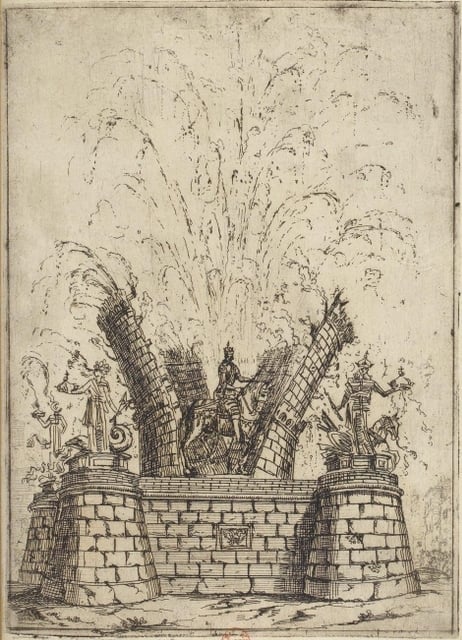 Simon Werrett explores how artists through the ages have responded to the challenge of representing firework displays, from the highly politicised and allegorical renderings of the early modern period to Whistler’s impressionistic Nocturne in Black and Gold.
Moonblight and Six Feet of Romance: Dan Carter Beard’s Foray into Fiction
June 11, 2014
Books & Literature & Art
Simon Werrett explores how artists through the ages have responded to the challenge of representing firework displays, from the highly politicised and allegorical renderings of the early modern period to Whistler’s impressionistic Nocturne in Black and Gold.
Moonblight and Six Feet of Romance: Dan Carter Beard’s Foray into Fiction
June 11, 2014
Books & Literature & Art
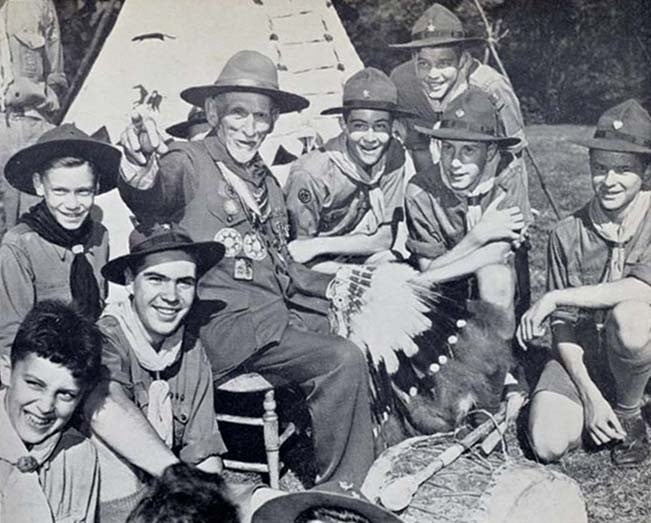 An esoteric disease which reveals things in their true light; three pairs of disembodied feet galavanting about the countryside – Abigail Walthausen explores the brief but strange literary career of Daniel Carter Beard, illustrator for Mark Twain and a founding father of the Boy Scouts of America.
1592: Coining Columbus
April 16, 2014
Books & Art & History
An esoteric disease which reveals things in their true light; three pairs of disembodied feet galavanting about the countryside – Abigail Walthausen explores the brief but strange literary career of Daniel Carter Beard, illustrator for Mark Twain and a founding father of the Boy Scouts of America.
1592: Coining Columbus
April 16, 2014
Books & Art & History
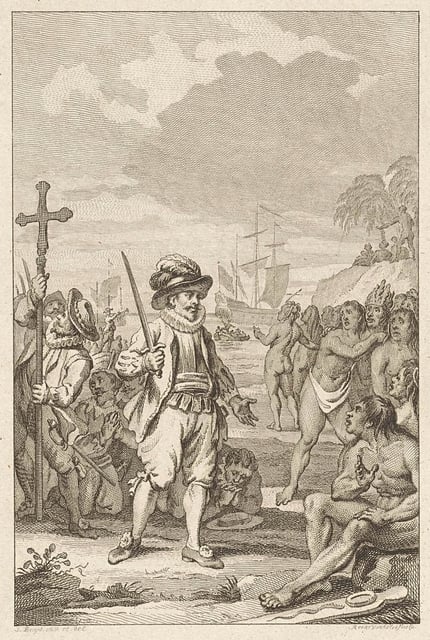 For many, the arrival of Christopher Columbus in the Americas is inextricably linked to a particular image: a small group of confident men on a tropical beach formally announcing their presence to the dumbfounded Amerindians. Michiel van Groesen explores the origins of this Eurocentric iconography and ascribes its persistence to the editorial strategy of the publisher who invented the initial design, a full century after Columbus’ encounter.
Victorian Occultism and the Art of Synesthesia
March 19, 2014
Books & Painting & Philosophy & Art
Grounded in the theory that ideas, emotions, and even events, can manifest as visible auras, Annie Besant and Charles Leadbeater’s Thought-Forms (1901) is an odd and intriguing work. Benjamin Breen explores these “synesthetic” abstractions and asks to what extent they, and the Victorian mysticism of which they were born, influenced the Modernist movement that flourished in the following decades.
Frederik Ruysch: The Artist of Death
March 5, 2014
Science & Art
For many, the arrival of Christopher Columbus in the Americas is inextricably linked to a particular image: a small group of confident men on a tropical beach formally announcing their presence to the dumbfounded Amerindians. Michiel van Groesen explores the origins of this Eurocentric iconography and ascribes its persistence to the editorial strategy of the publisher who invented the initial design, a full century after Columbus’ encounter.
Victorian Occultism and the Art of Synesthesia
March 19, 2014
Books & Painting & Philosophy & Art
Grounded in the theory that ideas, emotions, and even events, can manifest as visible auras, Annie Besant and Charles Leadbeater’s Thought-Forms (1901) is an odd and intriguing work. Benjamin Breen explores these “synesthetic” abstractions and asks to what extent they, and the Victorian mysticism of which they were born, influenced the Modernist movement that flourished in the following decades.
Frederik Ruysch: The Artist of Death
March 5, 2014
Science & Art
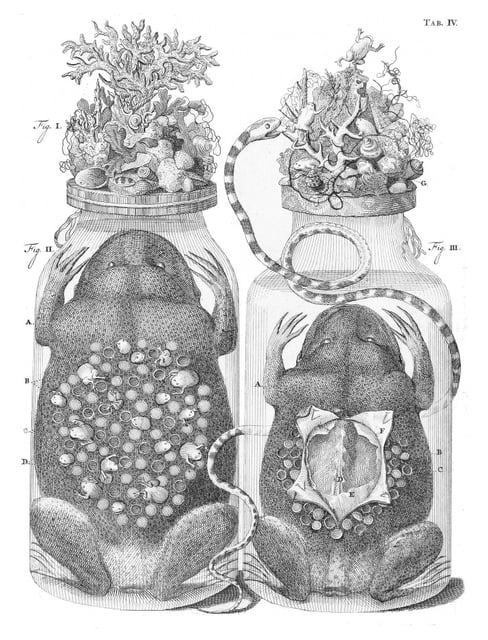 Luuc Kooijmans explores the work of Dutch anatomist Frederik Ruysch, known for his remarkable ‘still life’ displays which blurred the boundary between scientific preservation and vanitas art.
Olaus Magnus’ Sea Serpent
February 5, 2014
Painting & Science & Art
Luuc Kooijmans explores the work of Dutch anatomist Frederik Ruysch, known for his remarkable ‘still life’ displays which blurred the boundary between scientific preservation and vanitas art.
Olaus Magnus’ Sea Serpent
February 5, 2014
Painting & Science & Art
 The terrifying Great Norway Serpent, or Sea Orm, is the most famous of the many influential sea monsters depicted and described by 16th-century ecclesiastic, cartographer, and historian Olaus Magnus. Joseph Nigg, author of Sea Monsters, explores the iconic and literary legacy of the controversial serpent from its beginnings in the medieval imagination to modern cryptozoology.
Time and Place: Eric Ravilious (1903-1942)
November 27, 2013
Art
The terrifying Great Norway Serpent, or Sea Orm, is the most famous of the many influential sea monsters depicted and described by 16th-century ecclesiastic, cartographer, and historian Olaus Magnus. Joseph Nigg, author of Sea Monsters, explores the iconic and literary legacy of the controversial serpent from its beginnings in the medieval imagination to modern cryptozoology.
Time and Place: Eric Ravilious (1903-1942)
November 27, 2013
Art
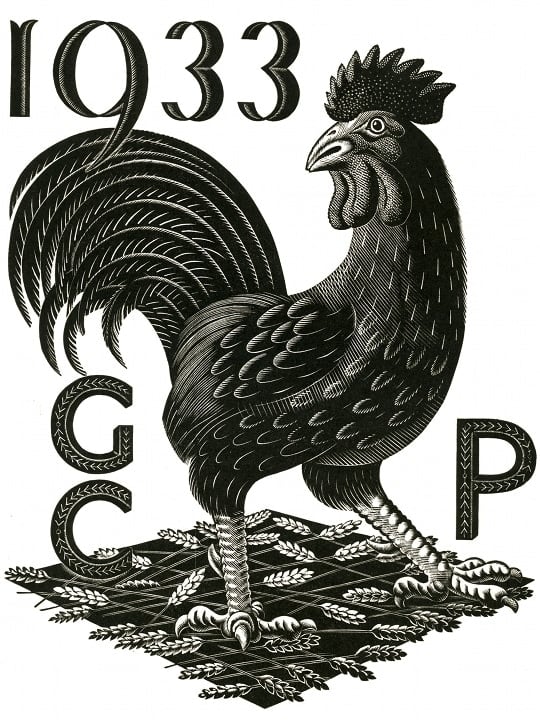 In many countries around the world the works of Eric Ravilious have come out of copyright this year – he died when his aircraft went missing off Iceland while he was making war paintings. An artist in multiple disciplines, his greater legacy dwells in water-colours. Frank Delaney re-visits the work of this understated, yet significant figure.
The Serious and the Smirk: The Smile in Portraiture
September 18, 2013
Photography & Painting & Art
Why do we so seldom see people smiling in painted portraits? Nicholas Jeeves explores the history of the smile through the ages of portraiture, from Da Vinci’s Mona Lisa to Alexander Gardner’s photographs of Abraham Lincoln.
Athanasius Kircher and the Hieroglyphic Sphinx
May 16, 2013
Books & Art & History & Religion
More than 170 years before Jean-François Champollion had the first real success in translating Egyptian hieroglyphs, the 17th century Jesuit scholar Athanasius Kircher was convinced he had cracked it. He was very wrong. Daniel Stolzenberg looks at Kircher’s Egyptian Oedipus, a book that has been called “one of the most learned monstrosities of all times.”
Joseph Banks: Portraits of a Placid Elephant
April 4, 2013
Painting & Science & Art & History
Patricia Fara traces the changing iconography of Joseph Banks, the English botanist who travelled on Captain Cook’s first great voyage and went on to become President of the Royal Society and important patron for a whole host of significant developments in the natural sciences.
The Redemption of Saint Anthony
March 7, 2013
Books & Art & Religion
In many countries around the world the works of Eric Ravilious have come out of copyright this year – he died when his aircraft went missing off Iceland while he was making war paintings. An artist in multiple disciplines, his greater legacy dwells in water-colours. Frank Delaney re-visits the work of this understated, yet significant figure.
The Serious and the Smirk: The Smile in Portraiture
September 18, 2013
Photography & Painting & Art
Why do we so seldom see people smiling in painted portraits? Nicholas Jeeves explores the history of the smile through the ages of portraiture, from Da Vinci’s Mona Lisa to Alexander Gardner’s photographs of Abraham Lincoln.
Athanasius Kircher and the Hieroglyphic Sphinx
May 16, 2013
Books & Art & History & Religion
More than 170 years before Jean-François Champollion had the first real success in translating Egyptian hieroglyphs, the 17th century Jesuit scholar Athanasius Kircher was convinced he had cracked it. He was very wrong. Daniel Stolzenberg looks at Kircher’s Egyptian Oedipus, a book that has been called “one of the most learned monstrosities of all times.”
Joseph Banks: Portraits of a Placid Elephant
April 4, 2013
Painting & Science & Art & History
Patricia Fara traces the changing iconography of Joseph Banks, the English botanist who travelled on Captain Cook’s first great voyage and went on to become President of the Royal Society and important patron for a whole host of significant developments in the natural sciences.
The Redemption of Saint Anthony
March 7, 2013
Books & Art & Religion
 Gustave Flaubert, best known for his masterpiece Madame Bovary, spent nearly thirty years working on a surreal and largely ‘unreadable’ retelling of the temptation of Saint Anthony. Colin Dickey explores how it was only in the dark and compelling illustrations of Odilon Redon, made years later, that Flaubert’s strangest work finally came to life.
Athanasius, Underground
November 1, 2012
Books & Science & Art & History
Gustave Flaubert, best known for his masterpiece Madame Bovary, spent nearly thirty years working on a surreal and largely ‘unreadable’ retelling of the temptation of Saint Anthony. Colin Dickey explores how it was only in the dark and compelling illustrations of Odilon Redon, made years later, that Flaubert’s strangest work finally came to life.
Athanasius, Underground
November 1, 2012
Books & Science & Art & History
 With his enormous range of scholarly pursuits the 17th-century polymath Athanasius Kircher has been hailed as the last Renaissance man and “the master of hundred arts”. John Glassie looks at one of Kircher’s great masterworks Mundus Subterraneus and how it was inspired by a subterranean adventure Kircher himself made into the bowl of Vesuvius.
John Martin and the Theatre of Subversion
July 12, 2012
Painting & Art & History
Max Adams, author of The Prometheans, looks at the art of John Martin and how in his epic landscapes of apocalyptic scale one can see reflected his revolutionary leanings.
The Krakatoa Sunsets
May 28, 2012
Poems & Literature & Science & Art & History
With his enormous range of scholarly pursuits the 17th-century polymath Athanasius Kircher has been hailed as the last Renaissance man and “the master of hundred arts”. John Glassie looks at one of Kircher’s great masterworks Mundus Subterraneus and how it was inspired by a subterranean adventure Kircher himself made into the bowl of Vesuvius.
John Martin and the Theatre of Subversion
July 12, 2012
Painting & Art & History
Max Adams, author of The Prometheans, looks at the art of John Martin and how in his epic landscapes of apocalyptic scale one can see reflected his revolutionary leanings.
The Krakatoa Sunsets
May 28, 2012
Poems & Literature & Science & Art & History
 When a volcano erupted on a small island in Indonesia in 1883, the evening skies of the world glowed for months with strange colours. Richard Hamblyn explores a little-known series of letters that the poet Gerard Manley Hopkins sent in to the journal Nature describing the phenomenon – letters that would constitute the majority of the small handful of writings published while he was alive.
Painting the New World
April 24, 2012
Painting & Art & History
When a volcano erupted on a small island in Indonesia in 1883, the evening skies of the world glowed for months with strange colours. Richard Hamblyn explores a little-known series of letters that the poet Gerard Manley Hopkins sent in to the journal Nature describing the phenomenon – letters that would constitute the majority of the small handful of writings published while he was alive.
Painting the New World
April 24, 2012
Painting & Art & History
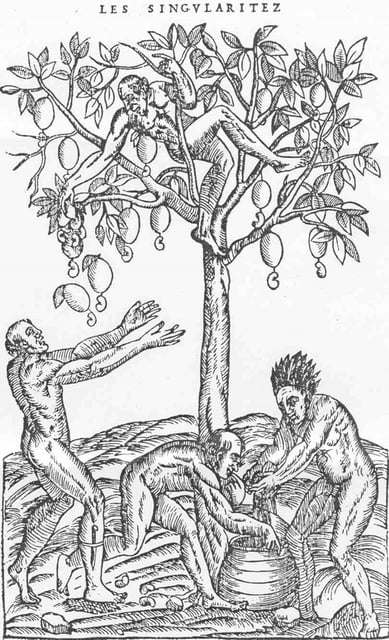 In 1585 the Englishman John White, governor of one of the very first North American colonies, made a series of exquisite watercolour sketches of the native Algonkin people alongside whom the settlers would try to live. Benjamin Breen explores the significance of the sketches and their link to the mystery of what became known as the “Lost Colony”.
Richard Dadd’s Master-Stroke
March 14, 2012
Painting & Art
In 1585 the Englishman John White, governor of one of the very first North American colonies, made a series of exquisite watercolour sketches of the native Algonkin people alongside whom the settlers would try to live. Benjamin Breen explores the significance of the sketches and their link to the mystery of what became known as the “Lost Colony”.
Richard Dadd’s Master-Stroke
March 14, 2012
Painting & Art
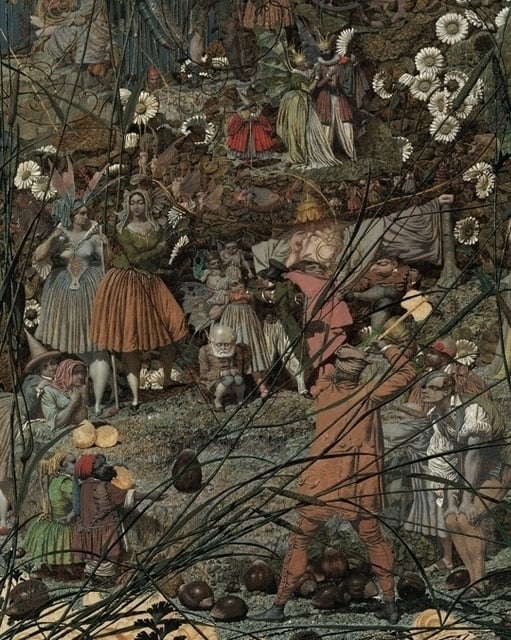 Nicholas Tromans, author of Richard Dadd: The Artist and the Asylum, takes a look at Dadd’s most famous painting The Fairy Feller’s Master-Stroke.
The Mysteries of Nature and Art
November 28, 2011
Books & Science & Art
Nicholas Tromans, author of Richard Dadd: The Artist and the Asylum, takes a look at Dadd’s most famous painting The Fairy Feller’s Master-Stroke.
The Mysteries of Nature and Art
November 28, 2011
Books & Science & Art
 Julie Gardham, Senior Assistant Librarian at University of Glasgow’s Special Collections Department, takes a look at the book that was said to have spurred a young Isaac Newton onto the scientific path, The Mysteries of Nature and Art by John Bate.
Navigating Dürer’s Woodcuts for The Ship of Fools
October 25, 2011
Books & Art & Religion
Julie Gardham, Senior Assistant Librarian at University of Glasgow’s Special Collections Department, takes a look at the book that was said to have spurred a young Isaac Newton onto the scientific path, The Mysteries of Nature and Art by John Bate.
Navigating Dürer’s Woodcuts for The Ship of Fools
October 25, 2011
Books & Art & Religion
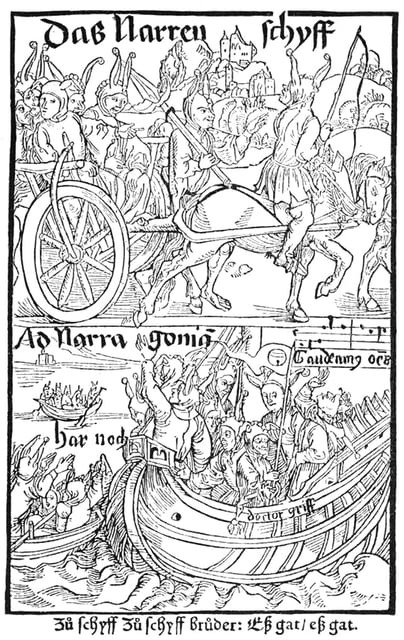 At the start of his career, as a young man in his twenties, Albrecht Dürer created a series of woodcuts to illustrate Sebastian Brant’s The Ship of Fools of 1494. Dürer scholar Rangsook Yoon explores the significance of these early pieces and how in their subtlety of allegory they show promise of his masterpieces to come.
Robert Fludd and His Images of The Divine
September 13, 2011
Books & Science & Philosophy & Art & Religion
At the start of his career, as a young man in his twenties, Albrecht Dürer created a series of woodcuts to illustrate Sebastian Brant’s The Ship of Fools of 1494. Dürer scholar Rangsook Yoon explores the significance of these early pieces and how in their subtlety of allegory they show promise of his masterpieces to come.
Robert Fludd and His Images of The Divine
September 13, 2011
Books & Science & Philosophy & Art & Religion
 Between 1617 and 1621 the English physician and polymath Robert Fludd published his masterwork Utriusque Cosmi, a book split into two volumes and packed with over 60 intricate engravings. Urszula Szulakowska explores the philosophical and theological ideas behind the extraordinary images found in the second part of the work.
Accuracy and Elegance in Cheselden’s Osteographia (1733)
August 22, 2011
Books & Science & Art
Between 1617 and 1621 the English physician and polymath Robert Fludd published his masterwork Utriusque Cosmi, a book split into two volumes and packed with over 60 intricate engravings. Urszula Szulakowska explores the philosophical and theological ideas behind the extraordinary images found in the second part of the work.
Accuracy and Elegance in Cheselden’s Osteographia (1733)
August 22, 2011
Books & Science & Art
 With its novel vignettes and its use of a camera obscura in the production of the plates, William Cheselden’s Osteographia, is recognized as a landmark in the history of anatomical illustration. Monique Kornell looks at its unique blend of accuracy and elegance.
Labillardière and his Relation
August 15, 2011
Books & Art & History
With its novel vignettes and its use of a camera obscura in the production of the plates, William Cheselden’s Osteographia, is recognized as a landmark in the history of anatomical illustration. Monique Kornell looks at its unique blend of accuracy and elegance.
Labillardière and his Relation
August 15, 2011
Books & Art & History
 When the French explorer Lapérouse went missing, a search voyage was put together to retrace his course around the islands of Australasia. On the mission was the naturalist Jacques Labillardière who published a book in 1800 of his experiences. Edward Duyker, author of Citizen Labillardière: A Naturalist’s Life in Revolution and Exploration (1755-1834), explores the impact of his pioneering work.
Beatus of Liébana
April 18, 2011
Books & Art & Religion
When the French explorer Lapérouse went missing, a search voyage was put together to retrace his course around the islands of Australasia. On the mission was the naturalist Jacques Labillardière who published a book in 1800 of his experiences. Edward Duyker, author of Citizen Labillardière: A Naturalist’s Life in Revolution and Exploration (1755-1834), explores the impact of his pioneering work.
Beatus of Liébana
April 18, 2011
Books & Art & Religion
 In a monastery in the mountains of northern Spain, 700 years after the Book of Revelations was written, a monk set down to illustrate a collection of writings he had compiled about this most vivid and apocalyptic of the New Testament books. Throughout the next few centuries his depictions of multi-headed beasts, decapitated sinners, and trumpet blowing angels, would be copied over and over again in various versions of the manuscript. John Williams, author of The Illustrated Beatus, introduces Beatus of Liébana and his Commentary on the Apocalypse.
The Life and Work of Nehemiah Grew
March 1, 2011
Books & Science & Philosophy & Art & History
In a monastery in the mountains of northern Spain, 700 years after the Book of Revelations was written, a monk set down to illustrate a collection of writings he had compiled about this most vivid and apocalyptic of the New Testament books. Throughout the next few centuries his depictions of multi-headed beasts, decapitated sinners, and trumpet blowing angels, would be copied over and over again in various versions of the manuscript. John Williams, author of The Illustrated Beatus, introduces Beatus of Liébana and his Commentary on the Apocalypse.
The Life and Work of Nehemiah Grew
March 1, 2011
Books & Science & Philosophy & Art & History
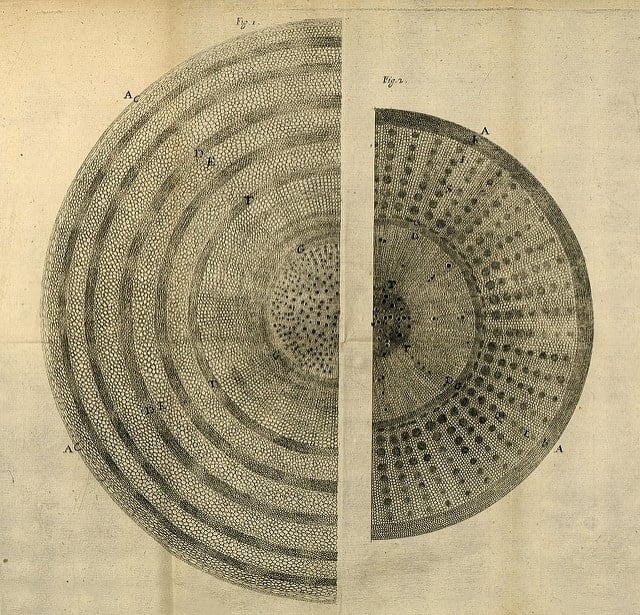 In the 82 illustrated plates included in his 1680 book The Anatomy of Plants, the English botanist Nehemiah Grew revealed for the first time the inner structure and function of plants in all their splendorous intricacy. Brian Garret explores how Grew’s pioneering “mechanist” vision in relation to the floral world paved the way for the science of plant anatomy.
Lewis Carroll and The Hunting of the Snark
February 22, 2011
Books & Poems & Literature & Art
In the 82 illustrated plates included in his 1680 book The Anatomy of Plants, the English botanist Nehemiah Grew revealed for the first time the inner structure and function of plants in all their splendorous intricacy. Brian Garret explores how Grew’s pioneering “mechanist” vision in relation to the floral world paved the way for the science of plant anatomy.
Lewis Carroll and The Hunting of the Snark
February 22, 2011
Books & Poems & Literature & Art
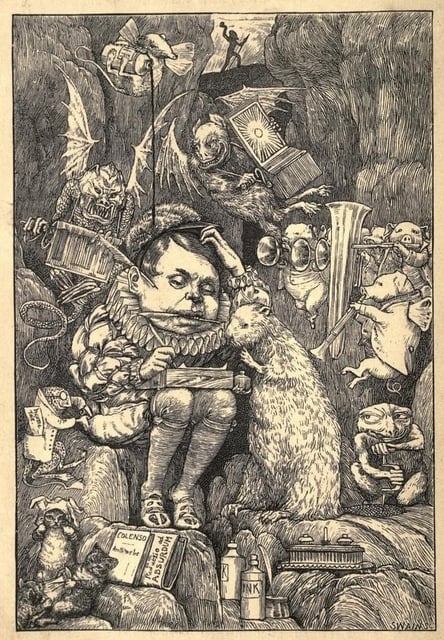 In 1876 Lewis Carroll published by far his longest poem – a fantastical epic tale recounting the adventures of a bizarre troupe of nine tradesmen and a beaver. Carrollian scholar, Edward Wakeling, introduces The Hunting of the Snark.
The Snowflake Man of Vermont
February 14, 2011
Photography & Science & Art
In 1876 Lewis Carroll published by far his longest poem – a fantastical epic tale recounting the adventures of a bizarre troupe of nine tradesmen and a beaver. Carrollian scholar, Edward Wakeling, introduces The Hunting of the Snark.
The Snowflake Man of Vermont
February 14, 2011
Photography & Science & Art
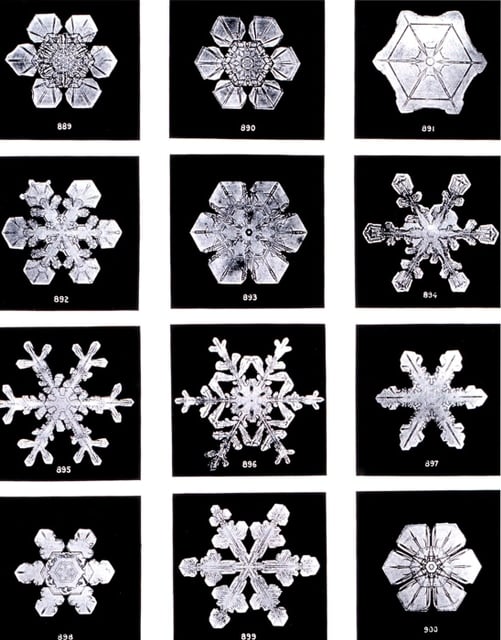 Keith C. Heidorn takes a look at the life and work of Wilson Bentley, a self-educated farmer from a small American town who, by combining a bellows camera with a microscope, managed to photograph the dizzyingly intricate and diverse structures of the snow crystal.
Ernst Haeckel and the Unity of Culture
January 24, 2011
Science & Philosophy & Art & Religion
Keith C. Heidorn takes a look at the life and work of Wilson Bentley, a self-educated farmer from a small American town who, by combining a bellows camera with a microscope, managed to photograph the dizzyingly intricate and diverse structures of the snow crystal.
Ernst Haeckel and the Unity of Culture
January 24, 2011
Science & Philosophy & Art & Religion
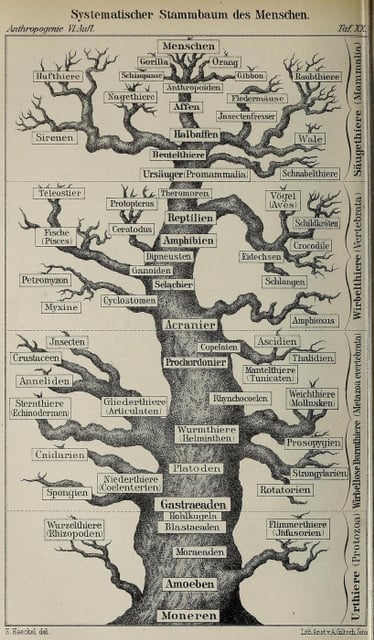 In addition to describing and naming thousands of new species the German biologist and philosopher Ernst Haeckel was behind some of history’s most impressive meetings of science and art. Dr Mario A. Di Gregorio explores Haeckel’s unique idea of “monism” which lies behind the mesmerising illustrations of his most famous work, Kunstformen Der Natur.
In addition to describing and naming thousands of new species the German biologist and philosopher Ernst Haeckel was behind some of history’s most impressive meetings of science and art. Dr Mario A. Di Gregorio explores Haeckel’s unique idea of “monism” which lies behind the mesmerising illustrations of his most famous work, Kunstformen Der Natur.
 When birds of paradise first arrived to Europe, as dried specimens with legs and wings removed, they were seen in almost mythical terms — as angelic beings forever airborne, nourished by dew and the “nectar” of sunlight. Natalie Lawrence looks at how European naturalists of the 16th and 17th centuries attempted to make sense of these entirely novel and exotic creatures from the East.
Pens and Needles: Reviving Book-Embroidery in Victorian England
March 21, 2018
Books & Art
When birds of paradise first arrived to Europe, as dried specimens with legs and wings removed, they were seen in almost mythical terms — as angelic beings forever airborne, nourished by dew and the “nectar” of sunlight. Natalie Lawrence looks at how European naturalists of the 16th and 17th centuries attempted to make sense of these entirely novel and exotic creatures from the East.
Pens and Needles: Reviving Book-Embroidery in Victorian England
March 21, 2018
Books & Art
 Fashionable in the 16th and 17th century, the art of embroidering unique covers for books saw a comeback in late 19th-century England, from the middle-class drawing room to the Arts and Crafts movement. Jessica Roberson explores the bibliomania, patriotism, and issues around gender so central to the revival.
Illustrating Carnival: Remembering the Overlooked Artists Behind Early Mardi Gras
February 7, 2018
Art & History
Fashionable in the 16th and 17th century, the art of embroidering unique covers for books saw a comeback in late 19th-century England, from the middle-class drawing room to the Arts and Crafts movement. Jessica Roberson explores the bibliomania, patriotism, and issues around gender so central to the revival.
Illustrating Carnival: Remembering the Overlooked Artists Behind Early Mardi Gras
February 7, 2018
Art & History
 For more than 150 years the city of New Orleans has been known for the theatricality and extravagance of its Mardi Gras celebrations. Allison C. Meier looks at the wonderfully ornate float and costume designs from Carnival’s “Golden Age” and the group of New Orleans artists who created them.
The Dreams of an Inventor in 1420
January 24, 2018
Science & Art
For more than 150 years the city of New Orleans has been known for the theatricality and extravagance of its Mardi Gras celebrations. Allison C. Meier looks at the wonderfully ornate float and costume designs from Carnival’s “Golden Age” and the group of New Orleans artists who created them.
The Dreams of an Inventor in 1420
January 24, 2018
Science & Art
 Bennett Gilbert peruses the sketchbook of 15th-century engineer Johannes de Fontana, a catalogue of designs for a variety of fantastic and often impossible inventions, including fire-breathing automatons, pulley-powered angels, and the earliest surviving drawing of a magic lantern device.
Pods, Pots, and Potions: Putting Cacao to Paper in Early Modern Europe
December 7, 2017
Science & Art & History
Bennett Gilbert peruses the sketchbook of 15th-century engineer Johannes de Fontana, a catalogue of designs for a variety of fantastic and often impossible inventions, including fire-breathing automatons, pulley-powered angels, and the earliest surviving drawing of a magic lantern device.
Pods, Pots, and Potions: Putting Cacao to Paper in Early Modern Europe
December 7, 2017
Science & Art & History
 Christine Jones explores the different ways the cacao tree has been depicted through history — from 16th-century codices to 18th-century botanicals — and what this changing iconography reveals about cacao’s journey into European culture.
Brief Encounters with Jean-Frédéric Maximilien de Waldeck
November 22, 2017
Art & History
Christine Jones explores the different ways the cacao tree has been depicted through history — from 16th-century codices to 18th-century botanicals — and what this changing iconography reveals about cacao’s journey into European culture.
Brief Encounters with Jean-Frédéric Maximilien de Waldeck
November 22, 2017
Art & History
 Not a lot concerning the artist, erotic publisher, explorer, and general enigma Count de Waldeck can be taken at face value, and this certainly includes his fanciful representations of ancient Mesoamerican culture which — despite the exquisite brilliance of their execution — run wild with anatopistic lions, elephants, and suspicious architecture. Rhys Griffiths looks at the life and work of one of the 19th century’s most mysterious and eccentric figures.
Flash Mob: Revolution, Lightning, and the People’s Will
November 9, 2017
Art & History
Not a lot concerning the artist, erotic publisher, explorer, and general enigma Count de Waldeck can be taken at face value, and this certainly includes his fanciful representations of ancient Mesoamerican culture which — despite the exquisite brilliance of their execution — run wild with anatopistic lions, elephants, and suspicious architecture. Rhys Griffiths looks at the life and work of one of the 19th century’s most mysterious and eccentric figures.
Flash Mob: Revolution, Lightning, and the People’s Will
November 9, 2017
Art & History
 Kevin Duong explores how leading French revolutionaries, in need of an image to represent the all important “will of the people”, turned to the thunderbolt — a natural symbol of power and illumination that also signalled the scientific ideals so key to their project.
Defining the Demonic
October 25, 2017
Books & Art & Religion
Kevin Duong explores how leading French revolutionaries, in need of an image to represent the all important “will of the people”, turned to the thunderbolt — a natural symbol of power and illumination that also signalled the scientific ideals so key to their project.
Defining the Demonic
October 25, 2017
Books & Art & Religion
 Although Jacques Collin de Plancy’s Dictionnaire infernal, a monumental compendium of all things diabolical, was first published in 1818 to much success, it is the fabulously illustrated final edition of 1863 which secured the book as a landmark in the study and representation of demons. Ed Simon explores the work and how at its heart lies an unlikely but pertinent synthesis of the Enlightenment and the occult.
Human Forms in Nature: Ernst Haeckel’s Trip to South Asia and Its Aftermath
September 13, 2017
Science & Art
Although Jacques Collin de Plancy’s Dictionnaire infernal, a monumental compendium of all things diabolical, was first published in 1818 to much success, it is the fabulously illustrated final edition of 1863 which secured the book as a landmark in the study and representation of demons. Ed Simon explores the work and how at its heart lies an unlikely but pertinent synthesis of the Enlightenment and the occult.
Human Forms in Nature: Ernst Haeckel’s Trip to South Asia and Its Aftermath
September 13, 2017
Science & Art
 An early promoter and populariser of Darwin’s evolutionary theory, the German biologist and artist Ernst Haeckel was a hugely influential figure of the late 19th century. Bernd Brunner looks at how a trip to Sri Lanka sowed the seeds for not only Haeckel’s majestic illustrations from his Art Forms in Nature, for which he is perhaps best known today, but also his disturbing ideas on race and eugenics.
Out From Behind This Mask
July 27, 2017
Philosophy & Art & History
An early promoter and populariser of Darwin’s evolutionary theory, the German biologist and artist Ernst Haeckel was a hugely influential figure of the late 19th century. Bernd Brunner looks at how a trip to Sri Lanka sowed the seeds for not only Haeckel’s majestic illustrations from his Art Forms in Nature, for which he is perhaps best known today, but also his disturbing ideas on race and eugenics.
Out From Behind This Mask
July 27, 2017
Philosophy & Art & History
 A Barthesian bristle and the curious power of Walt Whitman’s posthumous eyelids — D. Graham Burnett on meditations conjured by a visit to the death masks of the Laurence Hutton Collection.
Gustav Wunderwald’s Paintings of Weimar Berlin
May 31, 2017
Painting & Art
A Barthesian bristle and the curious power of Walt Whitman’s posthumous eyelids — D. Graham Burnett on meditations conjured by a visit to the death masks of the Laurence Hutton Collection.
Gustav Wunderwald’s Paintings of Weimar Berlin
May 31, 2017
Painting & Art
 The Berlin of the 1920s is often associated with a certain excess and decadence, but it was a quite different side of the city — the “sobriety and desolation” of its industrial and working-class districts — which came to obsess the painter Gustav Wunderwald. Mark Hobbs explores.
Woodcuts and Witches
May 4, 2017
Books & Art & History & Religion
The Berlin of the 1920s is often associated with a certain excess and decadence, but it was a quite different side of the city — the “sobriety and desolation” of its industrial and working-class districts — which came to obsess the painter Gustav Wunderwald. Mark Hobbs explores.
Woodcuts and Witches
May 4, 2017
Books & Art & History & Religion
 Jon Crabb on the witch-craze of Early Modern Europe, and how the concurrent rise of the mass-produced woodcut helped forge the archetype of the broom-riding crone — complete with cauldron and cats — so familiar today.
A Queer Taste for Macaroni
February 22, 2017
Art & History
Jon Crabb on the witch-craze of Early Modern Europe, and how the concurrent rise of the mass-produced woodcut helped forge the archetype of the broom-riding crone — complete with cauldron and cats — so familiar today.
A Queer Taste for Macaroni
February 22, 2017
Art & History
 With his enormous hair, painted face, and dainty attire, the so-called “macaroni” was a common sight upon the streets and ridiculing prints of 1770s London. Dominic Janes explores how with this new figure — and the scandalous sodomy trials with which the stereotype became entwined — a widespread discussion of same-sex desire first entered the public realm, long before the days of Oscar Wilde.
The Many Lives of the Medieval Wound Man
December 7, 2016
Science & Art
With his enormous hair, painted face, and dainty attire, the so-called “macaroni” was a common sight upon the streets and ridiculing prints of 1770s London. Dominic Janes explores how with this new figure — and the scandalous sodomy trials with which the stereotype became entwined — a widespread discussion of same-sex desire first entered the public realm, long before the days of Oscar Wilde.
The Many Lives of the Medieval Wound Man
December 7, 2016
Science & Art
 Sliced, stabbed, punctured, bleeding, harassed on all sides by various weaponry, the curious image of Wound Man is a rare yet intriguing presence in the world of medieval and early modern medical manuscripts. Jack Hartnell explores this enigmatic figure’s journey through the centuries.
Harry Clarke’s Looking Glass
October 12, 2016
Art
With their intricate line and often ghoulish tone, the works of Irish artist Harry Clarke are amongst the most striking in the history of illustration and stained glass design. Kelly Sullivan explores how, unknown to many at the time, Clarke took to including his own face in many of his pictures.
Out of Their Love They Made It: A Visual History of Buraq
September 21, 2016
Art & Religion
Sliced, stabbed, punctured, bleeding, harassed on all sides by various weaponry, the curious image of Wound Man is a rare yet intriguing presence in the world of medieval and early modern medical manuscripts. Jack Hartnell explores this enigmatic figure’s journey through the centuries.
Harry Clarke’s Looking Glass
October 12, 2016
Art
With their intricate line and often ghoulish tone, the works of Irish artist Harry Clarke are amongst the most striking in the history of illustration and stained glass design. Kelly Sullivan explores how, unknown to many at the time, Clarke took to including his own face in many of his pictures.
Out of Their Love They Made It: A Visual History of Buraq
September 21, 2016
Art & Religion
 Although mentioned only briefly in the Qur’an, the story of the Prophet Muhammad’s night journey to heaven astride a winged horse called Buraq has long caught the imagination of artists. Yasmine Seale charts the many representations of this enigmatic steed, from early Islamic scripture to contemporary Delhi, and explores what such a figure can tell us about the nature of belief.
“Unlimiting the Bounds”: the Panorama and the Balloon View
August 3, 2016
Art & History
Although mentioned only briefly in the Qur’an, the story of the Prophet Muhammad’s night journey to heaven astride a winged horse called Buraq has long caught the imagination of artists. Yasmine Seale charts the many representations of this enigmatic steed, from early Islamic scripture to contemporary Delhi, and explores what such a figure can tell us about the nature of belief.
“Unlimiting the Bounds”: the Panorama and the Balloon View
August 3, 2016
Art & History
 The second essay in a two-part series in which Lily Ford explores how balloon flight transformed our ideas of landscape. Here she looks at the phenomenon of the panorama, and how its attempts at creating the immersive view were inextricably linked to the new visual experience opened up by the advent of ballooning.
“For the Sake of the Prospect”: Experiencing the World from Above in the Late 18th Century
July 20, 2016
Art & History
The second essay in a two-part series in which Lily Ford explores how balloon flight transformed our ideas of landscape. Here she looks at the phenomenon of the panorama, and how its attempts at creating the immersive view were inextricably linked to the new visual experience opened up by the advent of ballooning.
“For the Sake of the Prospect”: Experiencing the World from Above in the Late 18th Century
July 20, 2016
Art & History
 The first essay in a two-part series in which Lily Ford explores how balloon flight transformed our ideas of landscape. We begin with a look at the unique set of images included in Thomas Baldwin’s Airopaidia (1786) — the first “real” overhead aerial views.
The Secret History of Holywell Street: Home to Victorian London’s Dirty Book Trade
June 29, 2016
Photography & Literature & Art & History
The first essay in a two-part series in which Lily Ford explores how balloon flight transformed our ideas of landscape. We begin with a look at the unique set of images included in Thomas Baldwin’s Airopaidia (1786) — the first “real” overhead aerial views.
The Secret History of Holywell Street: Home to Victorian London’s Dirty Book Trade
June 29, 2016
Photography & Literature & Art & History
 Victorian sexuality is often considered synonymous with prudishness, conjuring images of covered-up piano legs and dark ankle-length skirts. Historian Matthew Green uncovers a quite different scene in the sordid story of Holywell St, 19th-century London’s epicentre of erotica and smut.
Picturing Don Quixote
April 6, 2016
Books & Literature & Art
Victorian sexuality is often considered synonymous with prudishness, conjuring images of covered-up piano legs and dark ankle-length skirts. Historian Matthew Green uncovers a quite different scene in the sordid story of Holywell St, 19th-century London’s epicentre of erotica and smut.
Picturing Don Quixote
April 6, 2016
Books & Literature & Art
 This year marks the 400th anniversary of the death of Miguel de Cervantes, author of one of the best-loved and most frequently illustrated books in the history of literature — Don Quixote. Rachel Schmidt explores how the varying approaches to illustrating the tale have reflected and impacted its reading through the centuries.
The Strange Case of Mr William T. Horton
March 9, 2016
Art
This year marks the 400th anniversary of the death of Miguel de Cervantes, author of one of the best-loved and most frequently illustrated books in the history of literature — Don Quixote. Rachel Schmidt explores how the varying approaches to illustrating the tale have reflected and impacted its reading through the centuries.
The Strange Case of Mr William T. Horton
March 9, 2016
Art
 Championed in his day by friend and fellow mystic W. B. Yeats, today the artist William T. Horton and his stark minimalistic creations are largely forgotten. Jon Crabb on a unique and unusual talent.
Who Says Michelangelo Was Right? Conflicting Visions of the Past in Early Modern Prints
February 10, 2016
Art
Championed in his day by friend and fellow mystic W. B. Yeats, today the artist William T. Horton and his stark minimalistic creations are largely forgotten. Jon Crabb on a unique and unusual talent.
Who Says Michelangelo Was Right? Conflicting Visions of the Past in Early Modern Prints
February 10, 2016
Art
 When the lost classical sculpture Laocoön and His Sons — lauded as representing the very highest ideal of art — was dug up in 1506 with limbs missing, the authorities in Rome set about restoring it to how they imagined it once to look. Monique Webber explores how it was in reproductive prints that this vision was contested, offering a challenge to the mainstream interpretation of Antiquity.
On Oscar Wilde and Plagiarism
January 13, 2016
Books & Poems & Art
When the lost classical sculpture Laocoön and His Sons — lauded as representing the very highest ideal of art — was dug up in 1506 with limbs missing, the authorities in Rome set about restoring it to how they imagined it once to look. Monique Webber explores how it was in reproductive prints that this vision was contested, offering a challenge to the mainstream interpretation of Antiquity.
On Oscar Wilde and Plagiarism
January 13, 2016
Books & Poems & Art
 Celebrated for his innovative wit, Oscar Wilde and the notion of originality are common bedfellows. The pairing, however, is not without its complications. Joseph Bristow and Rebecca N. Mitchell explore the claims of plagiarism that dogged Wilde’s career, particularly as regards his relationship with that other great figure of late-19th-century Decadence, the American painter James McNeill Whistler.
Tribal Life in Old Lyme: Canada’s Colorblind Chronicler and his Connecticut Exile
September 2, 2015
Books & Painting & Art
Abigail Walthausen explores the life and work of Arthur Heming, the Canadian painter who — having been diagnosed with colourblindness as a child — worked for most of his life in a distinctive palette of black, yellow, and white.
Sex and Science in Robert Thornton’s Temple of Flora
March 11, 2015
Books & Poems & Painting & Science & Art
Celebrated for his innovative wit, Oscar Wilde and the notion of originality are common bedfellows. The pairing, however, is not without its complications. Joseph Bristow and Rebecca N. Mitchell explore the claims of plagiarism that dogged Wilde’s career, particularly as regards his relationship with that other great figure of late-19th-century Decadence, the American painter James McNeill Whistler.
Tribal Life in Old Lyme: Canada’s Colorblind Chronicler and his Connecticut Exile
September 2, 2015
Books & Painting & Art
Abigail Walthausen explores the life and work of Arthur Heming, the Canadian painter who — having been diagnosed with colourblindness as a child — worked for most of his life in a distinctive palette of black, yellow, and white.
Sex and Science in Robert Thornton’s Temple of Flora
March 11, 2015
Books & Poems & Painting & Science & Art
 Bridal beds, blushing captives, and swollen trunks – Carl Linnaeus’ taxonomy of plants heralded a whole new era in 18th-century Europe of plants being spoken of in sexualised terms. Martin Kemp explores* how this association between the floral and erotic reached its visual zenith in Robert Thornton’s exquisitely illustrated Temple of Flora.
The Eternal Guffaw: John Leech and The Comic History of Rome
February 25, 2015
Books & Art
At the beginning of the 1850s, two stalwarts from the heart of London-based satirical magazine Punch, Gilbert Abbott à Beckett and John Leech, cast their mocking eye a little further back in time and published The Comic History of Rome. Caroline Wazer explores how it is not in the text but rather in Leech’s delightfully anachronistic illustrations that the book’s true subversion lies, offering as they do a critique of Victorian society itself.
Illustrations of Madness: James Tilly Matthews and the Air Loom
November 12, 2014
Science & Art & History
Mike Jay recounts the tragic story of James Tilly Matthews, a former peace activist of the Napoleonic Wars who was confined to London’s notorious Bedlam asylum in 1797 for believing that his mind was under the control of the “Air Loom” – a terrifying machine whose mesmeric rays and mysterious gases were brainwashing politicians and plunging Europe into revolution, terror, and war.
Redressing the Balance: Levinus Vincent’s Wonder Theatre of Nature
August 20, 2014
Science & Art
Bert van de Roemer explores the curiosity cabinet of the Dutch collector Levinus Vincent and how the aesthetic drive behind his meticulous ordering of the contents was in essence religious, an attempt to emphasise the wonder of God’s creations by restoring the natural world to its prelapsarian harmony.
The Tale of Beatrix Potter
July 23, 2014
Books & Art
Bridal beds, blushing captives, and swollen trunks – Carl Linnaeus’ taxonomy of plants heralded a whole new era in 18th-century Europe of plants being spoken of in sexualised terms. Martin Kemp explores* how this association between the floral and erotic reached its visual zenith in Robert Thornton’s exquisitely illustrated Temple of Flora.
The Eternal Guffaw: John Leech and The Comic History of Rome
February 25, 2015
Books & Art
At the beginning of the 1850s, two stalwarts from the heart of London-based satirical magazine Punch, Gilbert Abbott à Beckett and John Leech, cast their mocking eye a little further back in time and published The Comic History of Rome. Caroline Wazer explores how it is not in the text but rather in Leech’s delightfully anachronistic illustrations that the book’s true subversion lies, offering as they do a critique of Victorian society itself.
Illustrations of Madness: James Tilly Matthews and the Air Loom
November 12, 2014
Science & Art & History
Mike Jay recounts the tragic story of James Tilly Matthews, a former peace activist of the Napoleonic Wars who was confined to London’s notorious Bedlam asylum in 1797 for believing that his mind was under the control of the “Air Loom” – a terrifying machine whose mesmeric rays and mysterious gases were brainwashing politicians and plunging Europe into revolution, terror, and war.
Redressing the Balance: Levinus Vincent’s Wonder Theatre of Nature
August 20, 2014
Science & Art
Bert van de Roemer explores the curiosity cabinet of the Dutch collector Levinus Vincent and how the aesthetic drive behind his meticulous ordering of the contents was in essence religious, an attempt to emphasise the wonder of God’s creations by restoring the natural world to its prelapsarian harmony.
The Tale of Beatrix Potter
July 23, 2014
Books & Art
 This year, the works of one of the most successful and universal writers of all time came into the public domain in many countries around the world. The Tale of Peter Rabbit, The Tale of Squirrel Nutkin, The Tale of Benjamin Bunny, The Tale of Jemima Puddle-Duck – in all, thirty-three books bearing the name “Beatrix Potter” have sold close to 200 million copies. Frank Delaney enquires into the more complex woman behind the safe and warm-hearted stories.
Picturing Pyrotechnics
June 25, 2014
Art & History
This year, the works of one of the most successful and universal writers of all time came into the public domain in many countries around the world. The Tale of Peter Rabbit, The Tale of Squirrel Nutkin, The Tale of Benjamin Bunny, The Tale of Jemima Puddle-Duck – in all, thirty-three books bearing the name “Beatrix Potter” have sold close to 200 million copies. Frank Delaney enquires into the more complex woman behind the safe and warm-hearted stories.
Picturing Pyrotechnics
June 25, 2014
Art & History
 Simon Werrett explores how artists through the ages have responded to the challenge of representing firework displays, from the highly politicised and allegorical renderings of the early modern period to Whistler’s impressionistic Nocturne in Black and Gold.
Moonblight and Six Feet of Romance: Dan Carter Beard’s Foray into Fiction
June 11, 2014
Books & Literature & Art
Simon Werrett explores how artists through the ages have responded to the challenge of representing firework displays, from the highly politicised and allegorical renderings of the early modern period to Whistler’s impressionistic Nocturne in Black and Gold.
Moonblight and Six Feet of Romance: Dan Carter Beard’s Foray into Fiction
June 11, 2014
Books & Literature & Art
 An esoteric disease which reveals things in their true light; three pairs of disembodied feet galavanting about the countryside – Abigail Walthausen explores the brief but strange literary career of Daniel Carter Beard, illustrator for Mark Twain and a founding father of the Boy Scouts of America.
1592: Coining Columbus
April 16, 2014
Books & Art & History
An esoteric disease which reveals things in their true light; three pairs of disembodied feet galavanting about the countryside – Abigail Walthausen explores the brief but strange literary career of Daniel Carter Beard, illustrator for Mark Twain and a founding father of the Boy Scouts of America.
1592: Coining Columbus
April 16, 2014
Books & Art & History
 For many, the arrival of Christopher Columbus in the Americas is inextricably linked to a particular image: a small group of confident men on a tropical beach formally announcing their presence to the dumbfounded Amerindians. Michiel van Groesen explores the origins of this Eurocentric iconography and ascribes its persistence to the editorial strategy of the publisher who invented the initial design, a full century after Columbus’ encounter.
Victorian Occultism and the Art of Synesthesia
March 19, 2014
Books & Painting & Philosophy & Art
Grounded in the theory that ideas, emotions, and even events, can manifest as visible auras, Annie Besant and Charles Leadbeater’s Thought-Forms (1901) is an odd and intriguing work. Benjamin Breen explores these “synesthetic” abstractions and asks to what extent they, and the Victorian mysticism of which they were born, influenced the Modernist movement that flourished in the following decades.
Frederik Ruysch: The Artist of Death
March 5, 2014
Science & Art
For many, the arrival of Christopher Columbus in the Americas is inextricably linked to a particular image: a small group of confident men on a tropical beach formally announcing their presence to the dumbfounded Amerindians. Michiel van Groesen explores the origins of this Eurocentric iconography and ascribes its persistence to the editorial strategy of the publisher who invented the initial design, a full century after Columbus’ encounter.
Victorian Occultism and the Art of Synesthesia
March 19, 2014
Books & Painting & Philosophy & Art
Grounded in the theory that ideas, emotions, and even events, can manifest as visible auras, Annie Besant and Charles Leadbeater’s Thought-Forms (1901) is an odd and intriguing work. Benjamin Breen explores these “synesthetic” abstractions and asks to what extent they, and the Victorian mysticism of which they were born, influenced the Modernist movement that flourished in the following decades.
Frederik Ruysch: The Artist of Death
March 5, 2014
Science & Art
 Luuc Kooijmans explores the work of Dutch anatomist Frederik Ruysch, known for his remarkable ‘still life’ displays which blurred the boundary between scientific preservation and vanitas art.
Olaus Magnus’ Sea Serpent
February 5, 2014
Painting & Science & Art
Luuc Kooijmans explores the work of Dutch anatomist Frederik Ruysch, known for his remarkable ‘still life’ displays which blurred the boundary between scientific preservation and vanitas art.
Olaus Magnus’ Sea Serpent
February 5, 2014
Painting & Science & Art
 The terrifying Great Norway Serpent, or Sea Orm, is the most famous of the many influential sea monsters depicted and described by 16th-century ecclesiastic, cartographer, and historian Olaus Magnus. Joseph Nigg, author of Sea Monsters, explores the iconic and literary legacy of the controversial serpent from its beginnings in the medieval imagination to modern cryptozoology.
Time and Place: Eric Ravilious (1903-1942)
November 27, 2013
Art
The terrifying Great Norway Serpent, or Sea Orm, is the most famous of the many influential sea monsters depicted and described by 16th-century ecclesiastic, cartographer, and historian Olaus Magnus. Joseph Nigg, author of Sea Monsters, explores the iconic and literary legacy of the controversial serpent from its beginnings in the medieval imagination to modern cryptozoology.
Time and Place: Eric Ravilious (1903-1942)
November 27, 2013
Art
 In many countries around the world the works of Eric Ravilious have come out of copyright this year – he died when his aircraft went missing off Iceland while he was making war paintings. An artist in multiple disciplines, his greater legacy dwells in water-colours. Frank Delaney re-visits the work of this understated, yet significant figure.
The Serious and the Smirk: The Smile in Portraiture
September 18, 2013
Photography & Painting & Art
Why do we so seldom see people smiling in painted portraits? Nicholas Jeeves explores the history of the smile through the ages of portraiture, from Da Vinci’s Mona Lisa to Alexander Gardner’s photographs of Abraham Lincoln.
Athanasius Kircher and the Hieroglyphic Sphinx
May 16, 2013
Books & Art & History & Religion
More than 170 years before Jean-François Champollion had the first real success in translating Egyptian hieroglyphs, the 17th century Jesuit scholar Athanasius Kircher was convinced he had cracked it. He was very wrong. Daniel Stolzenberg looks at Kircher’s Egyptian Oedipus, a book that has been called “one of the most learned monstrosities of all times.”
Joseph Banks: Portraits of a Placid Elephant
April 4, 2013
Painting & Science & Art & History
Patricia Fara traces the changing iconography of Joseph Banks, the English botanist who travelled on Captain Cook’s first great voyage and went on to become President of the Royal Society and important patron for a whole host of significant developments in the natural sciences.
The Redemption of Saint Anthony
March 7, 2013
Books & Art & Religion
In many countries around the world the works of Eric Ravilious have come out of copyright this year – he died when his aircraft went missing off Iceland while he was making war paintings. An artist in multiple disciplines, his greater legacy dwells in water-colours. Frank Delaney re-visits the work of this understated, yet significant figure.
The Serious and the Smirk: The Smile in Portraiture
September 18, 2013
Photography & Painting & Art
Why do we so seldom see people smiling in painted portraits? Nicholas Jeeves explores the history of the smile through the ages of portraiture, from Da Vinci’s Mona Lisa to Alexander Gardner’s photographs of Abraham Lincoln.
Athanasius Kircher and the Hieroglyphic Sphinx
May 16, 2013
Books & Art & History & Religion
More than 170 years before Jean-François Champollion had the first real success in translating Egyptian hieroglyphs, the 17th century Jesuit scholar Athanasius Kircher was convinced he had cracked it. He was very wrong. Daniel Stolzenberg looks at Kircher’s Egyptian Oedipus, a book that has been called “one of the most learned monstrosities of all times.”
Joseph Banks: Portraits of a Placid Elephant
April 4, 2013
Painting & Science & Art & History
Patricia Fara traces the changing iconography of Joseph Banks, the English botanist who travelled on Captain Cook’s first great voyage and went on to become President of the Royal Society and important patron for a whole host of significant developments in the natural sciences.
The Redemption of Saint Anthony
March 7, 2013
Books & Art & Religion
 Gustave Flaubert, best known for his masterpiece Madame Bovary, spent nearly thirty years working on a surreal and largely ‘unreadable’ retelling of the temptation of Saint Anthony. Colin Dickey explores how it was only in the dark and compelling illustrations of Odilon Redon, made years later, that Flaubert’s strangest work finally came to life.
Athanasius, Underground
November 1, 2012
Books & Science & Art & History
Gustave Flaubert, best known for his masterpiece Madame Bovary, spent nearly thirty years working on a surreal and largely ‘unreadable’ retelling of the temptation of Saint Anthony. Colin Dickey explores how it was only in the dark and compelling illustrations of Odilon Redon, made years later, that Flaubert’s strangest work finally came to life.
Athanasius, Underground
November 1, 2012
Books & Science & Art & History
 With his enormous range of scholarly pursuits the 17th-century polymath Athanasius Kircher has been hailed as the last Renaissance man and “the master of hundred arts”. John Glassie looks at one of Kircher’s great masterworks Mundus Subterraneus and how it was inspired by a subterranean adventure Kircher himself made into the bowl of Vesuvius.
John Martin and the Theatre of Subversion
July 12, 2012
Painting & Art & History
Max Adams, author of The Prometheans, looks at the art of John Martin and how in his epic landscapes of apocalyptic scale one can see reflected his revolutionary leanings.
The Krakatoa Sunsets
May 28, 2012
Poems & Literature & Science & Art & History
With his enormous range of scholarly pursuits the 17th-century polymath Athanasius Kircher has been hailed as the last Renaissance man and “the master of hundred arts”. John Glassie looks at one of Kircher’s great masterworks Mundus Subterraneus and how it was inspired by a subterranean adventure Kircher himself made into the bowl of Vesuvius.
John Martin and the Theatre of Subversion
July 12, 2012
Painting & Art & History
Max Adams, author of The Prometheans, looks at the art of John Martin and how in his epic landscapes of apocalyptic scale one can see reflected his revolutionary leanings.
The Krakatoa Sunsets
May 28, 2012
Poems & Literature & Science & Art & History
 When a volcano erupted on a small island in Indonesia in 1883, the evening skies of the world glowed for months with strange colours. Richard Hamblyn explores a little-known series of letters that the poet Gerard Manley Hopkins sent in to the journal Nature describing the phenomenon – letters that would constitute the majority of the small handful of writings published while he was alive.
Painting the New World
April 24, 2012
Painting & Art & History
When a volcano erupted on a small island in Indonesia in 1883, the evening skies of the world glowed for months with strange colours. Richard Hamblyn explores a little-known series of letters that the poet Gerard Manley Hopkins sent in to the journal Nature describing the phenomenon – letters that would constitute the majority of the small handful of writings published while he was alive.
Painting the New World
April 24, 2012
Painting & Art & History
 In 1585 the Englishman John White, governor of one of the very first North American colonies, made a series of exquisite watercolour sketches of the native Algonkin people alongside whom the settlers would try to live. Benjamin Breen explores the significance of the sketches and their link to the mystery of what became known as the “Lost Colony”.
Richard Dadd’s Master-Stroke
March 14, 2012
Painting & Art
In 1585 the Englishman John White, governor of one of the very first North American colonies, made a series of exquisite watercolour sketches of the native Algonkin people alongside whom the settlers would try to live. Benjamin Breen explores the significance of the sketches and their link to the mystery of what became known as the “Lost Colony”.
Richard Dadd’s Master-Stroke
March 14, 2012
Painting & Art
 Nicholas Tromans, author of Richard Dadd: The Artist and the Asylum, takes a look at Dadd’s most famous painting The Fairy Feller’s Master-Stroke.
The Mysteries of Nature and Art
November 28, 2011
Books & Science & Art
Nicholas Tromans, author of Richard Dadd: The Artist and the Asylum, takes a look at Dadd’s most famous painting The Fairy Feller’s Master-Stroke.
The Mysteries of Nature and Art
November 28, 2011
Books & Science & Art
 Julie Gardham, Senior Assistant Librarian at University of Glasgow’s Special Collections Department, takes a look at the book that was said to have spurred a young Isaac Newton onto the scientific path, The Mysteries of Nature and Art by John Bate.
Navigating Dürer’s Woodcuts for The Ship of Fools
October 25, 2011
Books & Art & Religion
Julie Gardham, Senior Assistant Librarian at University of Glasgow’s Special Collections Department, takes a look at the book that was said to have spurred a young Isaac Newton onto the scientific path, The Mysteries of Nature and Art by John Bate.
Navigating Dürer’s Woodcuts for The Ship of Fools
October 25, 2011
Books & Art & Religion
 At the start of his career, as a young man in his twenties, Albrecht Dürer created a series of woodcuts to illustrate Sebastian Brant’s The Ship of Fools of 1494. Dürer scholar Rangsook Yoon explores the significance of these early pieces and how in their subtlety of allegory they show promise of his masterpieces to come.
Robert Fludd and His Images of The Divine
September 13, 2011
Books & Science & Philosophy & Art & Religion
At the start of his career, as a young man in his twenties, Albrecht Dürer created a series of woodcuts to illustrate Sebastian Brant’s The Ship of Fools of 1494. Dürer scholar Rangsook Yoon explores the significance of these early pieces and how in their subtlety of allegory they show promise of his masterpieces to come.
Robert Fludd and His Images of The Divine
September 13, 2011
Books & Science & Philosophy & Art & Religion
 Between 1617 and 1621 the English physician and polymath Robert Fludd published his masterwork Utriusque Cosmi, a book split into two volumes and packed with over 60 intricate engravings. Urszula Szulakowska explores the philosophical and theological ideas behind the extraordinary images found in the second part of the work.
Accuracy and Elegance in Cheselden’s Osteographia (1733)
August 22, 2011
Books & Science & Art
Between 1617 and 1621 the English physician and polymath Robert Fludd published his masterwork Utriusque Cosmi, a book split into two volumes and packed with over 60 intricate engravings. Urszula Szulakowska explores the philosophical and theological ideas behind the extraordinary images found in the second part of the work.
Accuracy and Elegance in Cheselden’s Osteographia (1733)
August 22, 2011
Books & Science & Art
 With its novel vignettes and its use of a camera obscura in the production of the plates, William Cheselden’s Osteographia, is recognized as a landmark in the history of anatomical illustration. Monique Kornell looks at its unique blend of accuracy and elegance.
Labillardière and his Relation
August 15, 2011
Books & Art & History
With its novel vignettes and its use of a camera obscura in the production of the plates, William Cheselden’s Osteographia, is recognized as a landmark in the history of anatomical illustration. Monique Kornell looks at its unique blend of accuracy and elegance.
Labillardière and his Relation
August 15, 2011
Books & Art & History
 When the French explorer Lapérouse went missing, a search voyage was put together to retrace his course around the islands of Australasia. On the mission was the naturalist Jacques Labillardière who published a book in 1800 of his experiences. Edward Duyker, author of Citizen Labillardière: A Naturalist’s Life in Revolution and Exploration (1755-1834), explores the impact of his pioneering work.
Beatus of Liébana
April 18, 2011
Books & Art & Religion
When the French explorer Lapérouse went missing, a search voyage was put together to retrace his course around the islands of Australasia. On the mission was the naturalist Jacques Labillardière who published a book in 1800 of his experiences. Edward Duyker, author of Citizen Labillardière: A Naturalist’s Life in Revolution and Exploration (1755-1834), explores the impact of his pioneering work.
Beatus of Liébana
April 18, 2011
Books & Art & Religion
 In a monastery in the mountains of northern Spain, 700 years after the Book of Revelations was written, a monk set down to illustrate a collection of writings he had compiled about this most vivid and apocalyptic of the New Testament books. Throughout the next few centuries his depictions of multi-headed beasts, decapitated sinners, and trumpet blowing angels, would be copied over and over again in various versions of the manuscript. John Williams, author of The Illustrated Beatus, introduces Beatus of Liébana and his Commentary on the Apocalypse.
The Life and Work of Nehemiah Grew
March 1, 2011
Books & Science & Philosophy & Art & History
In a monastery in the mountains of northern Spain, 700 years after the Book of Revelations was written, a monk set down to illustrate a collection of writings he had compiled about this most vivid and apocalyptic of the New Testament books. Throughout the next few centuries his depictions of multi-headed beasts, decapitated sinners, and trumpet blowing angels, would be copied over and over again in various versions of the manuscript. John Williams, author of The Illustrated Beatus, introduces Beatus of Liébana and his Commentary on the Apocalypse.
The Life and Work of Nehemiah Grew
March 1, 2011
Books & Science & Philosophy & Art & History
 In the 82 illustrated plates included in his 1680 book The Anatomy of Plants, the English botanist Nehemiah Grew revealed for the first time the inner structure and function of plants in all their splendorous intricacy. Brian Garret explores how Grew’s pioneering “mechanist” vision in relation to the floral world paved the way for the science of plant anatomy.
Lewis Carroll and The Hunting of the Snark
February 22, 2011
Books & Poems & Literature & Art
In the 82 illustrated plates included in his 1680 book The Anatomy of Plants, the English botanist Nehemiah Grew revealed for the first time the inner structure and function of plants in all their splendorous intricacy. Brian Garret explores how Grew’s pioneering “mechanist” vision in relation to the floral world paved the way for the science of plant anatomy.
Lewis Carroll and The Hunting of the Snark
February 22, 2011
Books & Poems & Literature & Art
 In 1876 Lewis Carroll published by far his longest poem – a fantastical epic tale recounting the adventures of a bizarre troupe of nine tradesmen and a beaver. Carrollian scholar, Edward Wakeling, introduces The Hunting of the Snark.
The Snowflake Man of Vermont
February 14, 2011
Photography & Science & Art
In 1876 Lewis Carroll published by far his longest poem – a fantastical epic tale recounting the adventures of a bizarre troupe of nine tradesmen and a beaver. Carrollian scholar, Edward Wakeling, introduces The Hunting of the Snark.
The Snowflake Man of Vermont
February 14, 2011
Photography & Science & Art
 Keith C. Heidorn takes a look at the life and work of Wilson Bentley, a self-educated farmer from a small American town who, by combining a bellows camera with a microscope, managed to photograph the dizzyingly intricate and diverse structures of the snow crystal.
Ernst Haeckel and the Unity of Culture
January 24, 2011
Science & Philosophy & Art & Religion
Keith C. Heidorn takes a look at the life and work of Wilson Bentley, a self-educated farmer from a small American town who, by combining a bellows camera with a microscope, managed to photograph the dizzyingly intricate and diverse structures of the snow crystal.
Ernst Haeckel and the Unity of Culture
January 24, 2011
Science & Philosophy & Art & Religion
 In addition to describing and naming thousands of new species the German biologist and philosopher Ernst Haeckel was behind some of history’s most impressive meetings of science and art. Dr Mario A. Di Gregorio explores Haeckel’s unique idea of “monism” which lies behind the mesmerising illustrations of his most famous work, Kunstformen Der Natur.
In addition to describing and naming thousands of new species the German biologist and philosopher Ernst Haeckel was behind some of history’s most impressive meetings of science and art. Dr Mario A. Di Gregorio explores Haeckel’s unique idea of “monism” which lies behind the mesmerising illustrations of his most famous work, Kunstformen Der Natur.